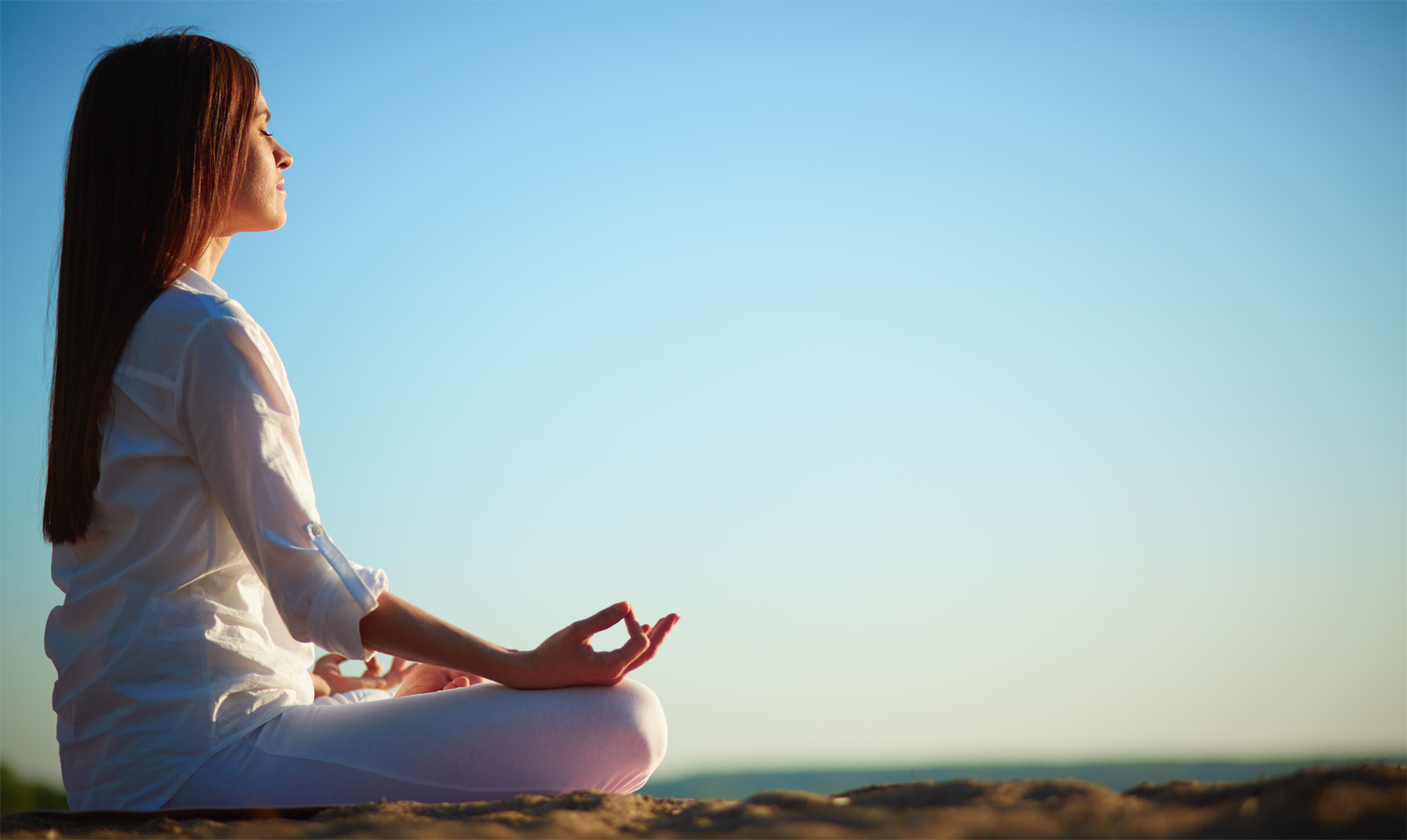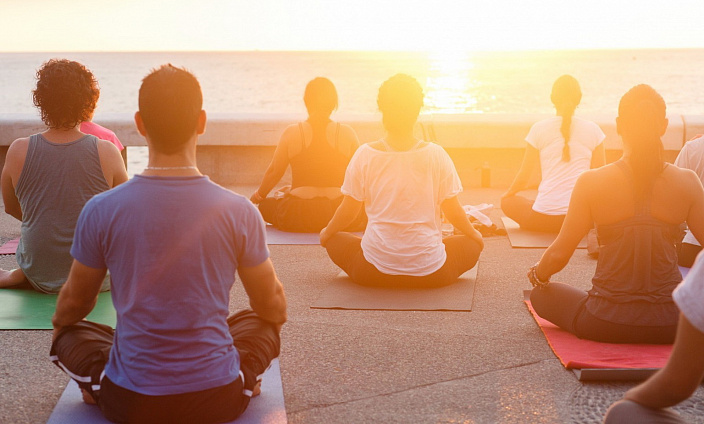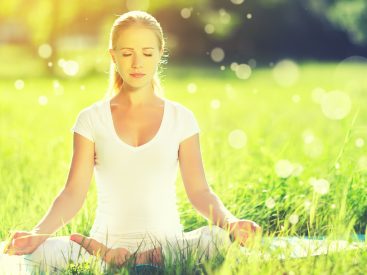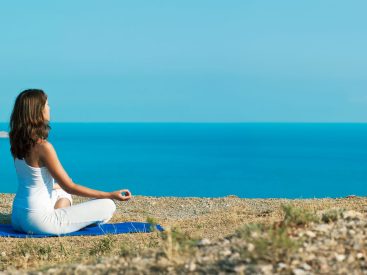“Close your eyes and not think about anything”, “turn on the music and relax” – these are the most popular ideas about what meditation is. Most people have a similar idea about the goals of meditation, and to the question: “Why meditation is needed” – many will answer without hesitation: “To relax and be calm.”
On the Internet, you can find a description of many practices that are offered under the name “meditation”, but have nothing to do with it. This term now means anything – concentration, affirmations, relaxation, and so on.
In order to get an idea of what real meditation is, you can study such a Buddhist text as “The Sutra on the Comprehension of the Actions and Dharma of the Bodhisattva All-Encompassing Wisdom”… This is a fairly extensive text, most of which describes exactly the meditation practice. And everything that is described there must be visualized and felt in your inner world. In order to at least roughly remember all this, you need a practically phenomenal memory, and in order to reproduce, you need to have a sufficiently developed spatial thinking. And this is one of the serious meditation practices that only a few are able to master.
Of course, there are also simpler meditation practices, but they also do not fit the description of “close your eyes and not think about anything.” Meditation in yoga is denoted by such a term as “dhyana”, which literally translates as ‘contemplation’, ‘seeing with the mind’ or ‘intuitive seeing’.
As for most of the practices that are widespread on the Internet, then we are most likely talking about concepts such as “pratyahara” – control of the senses – and “dharana” – a steady concentration on an object. According to the eight-step yoga system, which Patanjali described, these two practices are preliminary and only in the process of mastering them lead, in fact, to meditation – dhyana.
Now that we have understood the concepts, we will try to find out what meditation gives in the broad sense of the word and why meditation is needed. The phenomena described below on the physical and spiritual-psychic level take place both in the case of the practice of dhyana, and, to one degree or another, in the case of the practice of pratyahara and dharana. And oddly enough, it does not depend on the degree of complexity of the practice, but on the degree of its mastery and immersion.
- Meditation is not a religious ritual, but a real tool for self-development.
- Meditation affects cognitive function.
- Meditation is an effective stress reliever.
- Meditation is more effective than morphine.
- Meditation reduces the risk of heart attack.
- Meditation is training the mind.
Let’s take a closer look at the main positive aspects of meditation and try to determine what meditation is – a religious and esoteric practice or a real tool for changing your life, which is available to everyone.
There is a widespread misconception that meditation is a purely religious practice, and it is suitable only for some harsh ascetics, yogis who have renounced the world, wrapped themselves in saffron, and they do not care about anything other than the notorious nirvana. But this is just another stereotype.
Today meditation is practiced by many people who are successful in worldly life. One of the most striking examples is Steve Jobs, who practiced quite serious types of meditation from the Zen Buddhist tradition.
Therefore, today meditation practices have already firmly entered the lives of many people, and the trend in this matter is very encouraging. For many people today, meditating is as natural as exercising in the morning. Actually, this is exercise, only not for the body, but for the mind.

But meditation also affects the physical body, and in the most dramatic way. Research: (ncbi.nlm.nih.gov/pmc/articles/PMC1125975/) in this area shows that meditation has real therapeutic benefits. For example, just ten minutes of meditation can reduce the level of beta waves in the brain. In simple terms, the brain is less active in processing incoming information, and such a decrease in activity allows you to find peace on a physical and mental level.
Research (ncbi.nlm.nih.gov/pubmed/20363650) found that meditation directly affects the development of memory and learning abilities, as well as develops the abilities of introspection, self-awareness and compassion. MRI scans of the subjects’ brains showed that after eight weeks of meditation practice, the gray matter density increased by a third.
In the field of neuroscience, the positive effects of meditation are also noted. According to studies (ncbi.nlm.nih.gov/pubmed/25783612) conducted in this area, meditation practices strengthen the connections between neurons, which improves the perception and quality of information processing, and also speeds up the reaction.
It is enough to devote only about half an hour to meditation a day to get rid of or at least significantly reduce the symptoms of depression and anxiety disorders. This is evidenced by studies (ncbi.nlm.nih.gov/pmc/articles/PMC4895748/) aimed at studying the effect of meditation on stress.
Various studies in this area confirm that meditation can also help combat addictions. Perhaps this is because meditation triggers the release of dopamine, the hormone of pleasure. But any addiction is built on the principle of the desire to get exactly the release of dopamine. Thus, artificial stimulation of dopamine release is replaced with natural one. And this is the most effective method of dealing with addictions, when the destructive method of obtaining pleasure is changed to a healthier one.
It was to such a sensational discovery that scientists at Wake Forest Medical Center in North Carolina came. Fifteen subjects were taught basic meditation practices, and then an apparatus was attached to each leg that heated the skin to 50 degrees.
Then, brain MRI studies were conducted, which showed the difference between the sensation of pain during the heating of the skin before and after meditation. The images of the corresponding parts of the brain showed that the intensity of pain sensations decreased by 40 percent, and the subjective mental discomfort from them – by 57 percent. And according to the author of the study, Fadel Zeidan, the indicators are almost twice the indicators of the action of morphine in a similar situation.
This information was released by the American Heart Association on November 18, 2012. So, according to the ACA, according to the results of research by Dr. of Medicine Robert Schneider, meditation practices reduce the risk of heart attacks, strokes and heart attacks by 48%.
The study involved 201 people suffering from cardiovascular diseases. And it was noted that over a five-year period of meditation practice, subjects experienced almost half the number of strokes, heart attacks, and heart attacks compared to similar patients who did not practice meditation.

So what is meditation? As we could see above, this is not some kind of incomprehensible esoteric ritual, it is a quite useful tool for solving problems both on the physical and on the spiritual-mental level. This is not magic, not magic, this is the most common training of the mind.
Just as we train our body through physical education, we should also train the mind through meditative practices. There is a huge variety of meditation practices, but the simplest of them is concentration on the breath. At the very beginning, we already discussed that, formally, concentration is not a meditative practice. But let’s not go into the analysis of concepts again; more importantly, whatever the technique is called, it works.
For a start, it is advisable to choose a quiet, secluded place. It will be ideal if you meditate somewhere in nature. You also need to choose a time for meditation: you should have at least 30-40 minutes free, preferably in the morning (preferably before sunrise). This is the most favorable time for spiritual practice.
So, it is enough to sit cross-legged (not necessarily in the lotus position, but it would be ideal), and it is important that the back is straight. Then we begin to breathe slowly and deeply, gradually stretching the breath. The secret of this practice is that our mind has one feature: it cannot concentrate on two things at the same time. And if we concentrate on observing the breath, the internal dialogue stops or, at least, subsides a little.
It depends on how much you immerse yourself in the process of observing the breath. If all your attention is riveted to the breath, then everything else in your consciousness simply will not have a place. And if you manage to achieve one hundred percent concentration on the breathing process, you will feel a deep calm, which, perhaps, you have never felt before in your life; you yourself will feel it.
Then stay in this state for as long as time permits or as long as you wish. And these 30-40 minutes of practice will give you a charge of goodness and peace for the whole day. You can also repeat the practice in the evening to calm down after an eventful day. And this will allow you to sleep peacefully and without disturbing dreams. Thus, practicing in the morning and in the evening, you will gradually attain a state of calm, not only in meditation, but also in everyday life. And this will allow you to live more efficiently and consciously, which means that it is much less painful to experience stress and difficulties.
The described practice is one of the basic ones, but even it gives a powerful effect. If you want to try something more serious in this regard, you can get acquainted with advanced practices on the site asanaonline.ru… As we could see above, meditation leads to dramatic changes on the physical and spiritual-mental level. And meditation is not only the lot of Indian ascetics who donned saffron and renounced the world. Today meditation is a powerful tool for socially active and successful people leading a healthy lifestyle. And if it works, then why not take advantage of it?





